For many, the dream of owning a dog is intertwined with concerns about allergies. The thought of sneezes, itchy eyes, and wheezing can cast a shadow over bringing a furry friend into the home. This is where the appeal of “hypoallergenic” dogs, or more accurately, medium to small dog breeds that don’t shed much, comes into play. These breeds are often sought after by individuals and families managing dog allergies, offering a path to experiencing the joy of dog ownership with fewer allergic reactions. However, it’s crucial to understand what makes a dog “hypoallergenic” and which breeds truly fit the bill.
Understanding “Hypoallergenic” Dogs
The term “hypoallergenic” can be a bit misleading. The truth is, all dogs produce allergens. These allergens are primarily found in their dander (dead skin cells), saliva, and urine. What distinguishes breeds that are often labeled as hypoallergenic is their tendency to shed less hair. Less shedding means fewer dander-carrying hairs are distributed throughout the home, which can significantly reduce the exposure to allergens for sensitive individuals.
It’s important to emphasize that no dog breed is 100% allergen-free. Even breeds that shed minimally still produce dander and saliva that can trigger allergic responses. Therefore, while these breeds can be a better fit for allergy sufferers, diligent cleaning and, in some cases, allergy management strategies are still recommended.
Top Medium to Small Dog Breeds That Don’t Shed
When looking for a canine companion that minimizes shedding, focusing on breeds known for their low-shedding coats is key. These breeds often require regular grooming to keep their coats healthy and tangle-free, but the payoff is a cleaner home environment for allergy sufferers. Here’s a curated list of medium to small dog breeds that don’t shed much, offering a variety of temperaments and sizes to suit different lifestyles.
1. Poodle (Toy, Miniature, Standard)
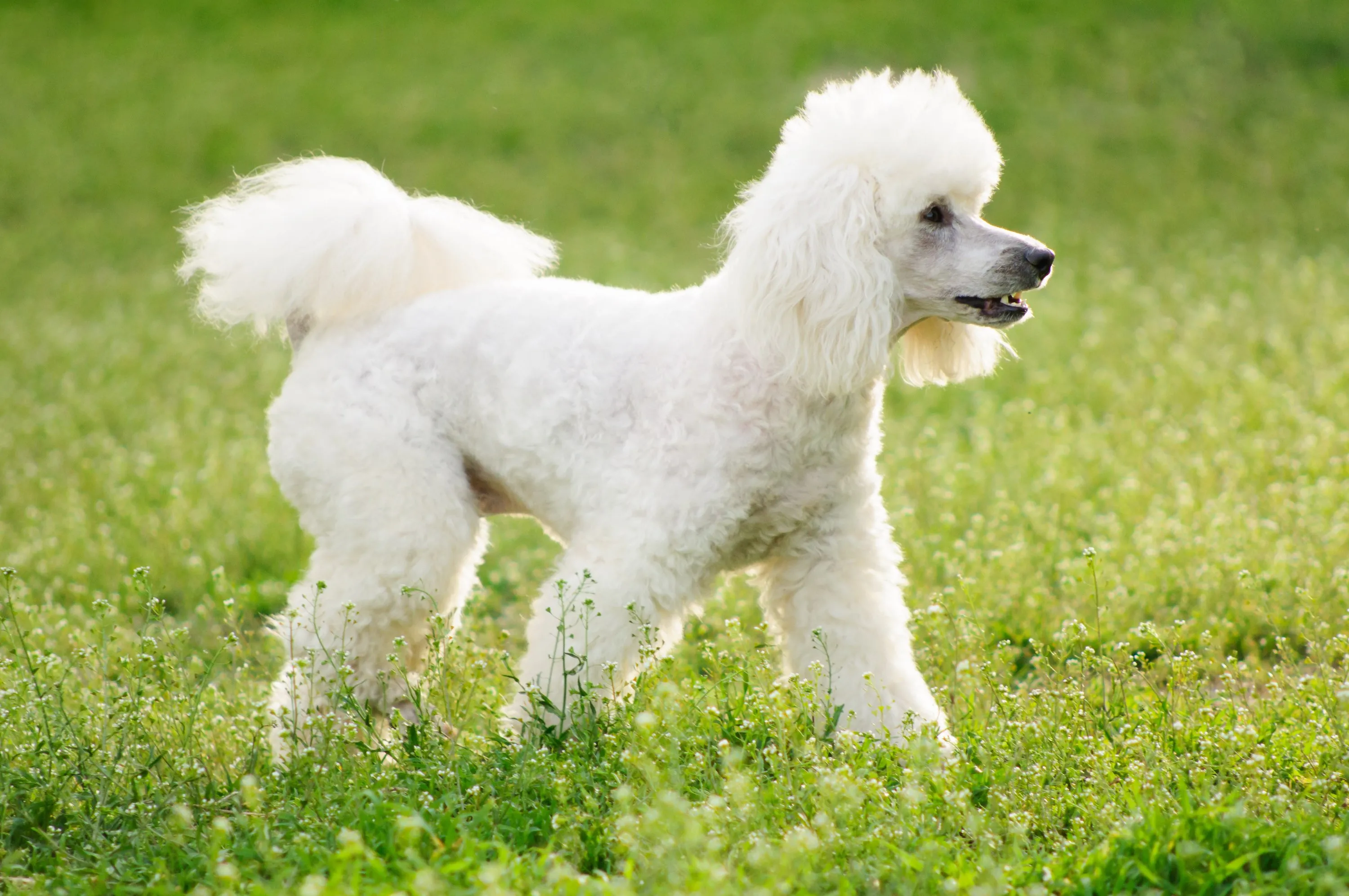 A white Toy Poodle with a stylized haircut sitting attentively.
A white Toy Poodle with a stylized haircut sitting attentively.
Poodles, in all their sizes – Toy, Miniature, and Standard – are famously low-shedding. Their curly, dense coats trap dander and hair, preventing it from scattering around the house. This breed is also renowned for its high intelligence and trainability, making them adaptable companions. Regular brushing is essential to prevent matting and keep their coat healthy. For owners looking for a smaller companion, the Toy and Miniature Poodles are excellent choices, while the Standard Poodle offers a larger, equally allergy-friendly option.
2. Yorkshire Terrier
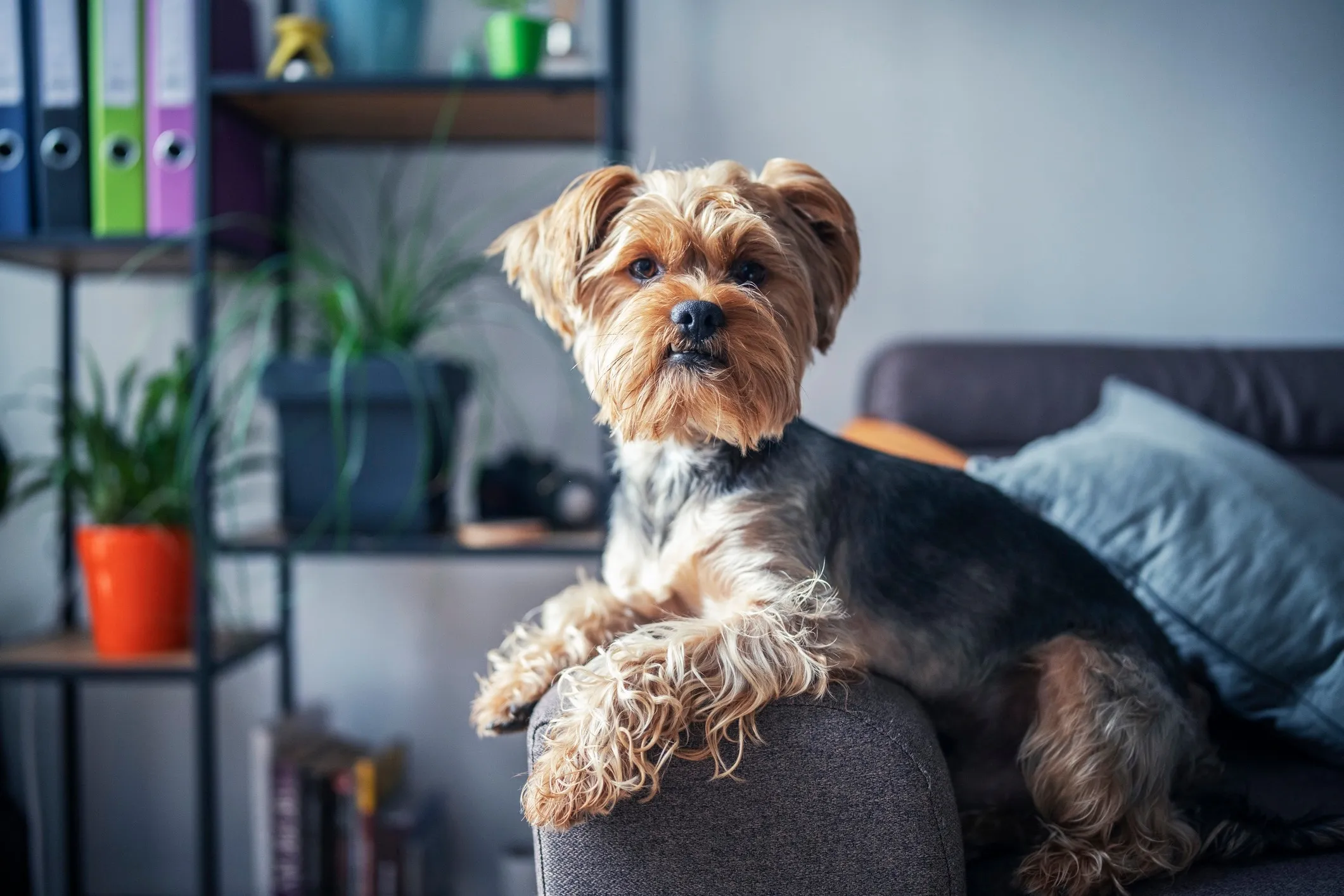 A small Yorkshire Terrier with characteristic blue and tan coloring, lounging on an armchair.
A small Yorkshire Terrier with characteristic blue and tan coloring, lounging on an armchair.
These spirited little dogs, often called “Yorkies,” are beloved for their spunky personalities and their hypoallergenic qualities. Their fine, silky hair grows continuously, much like human hair, and sheds very little. Yorkies are adaptable to various living situations, from spacious homes to cozy apartments, as long as they receive plenty of attention and affection.
3. Shih Tzu
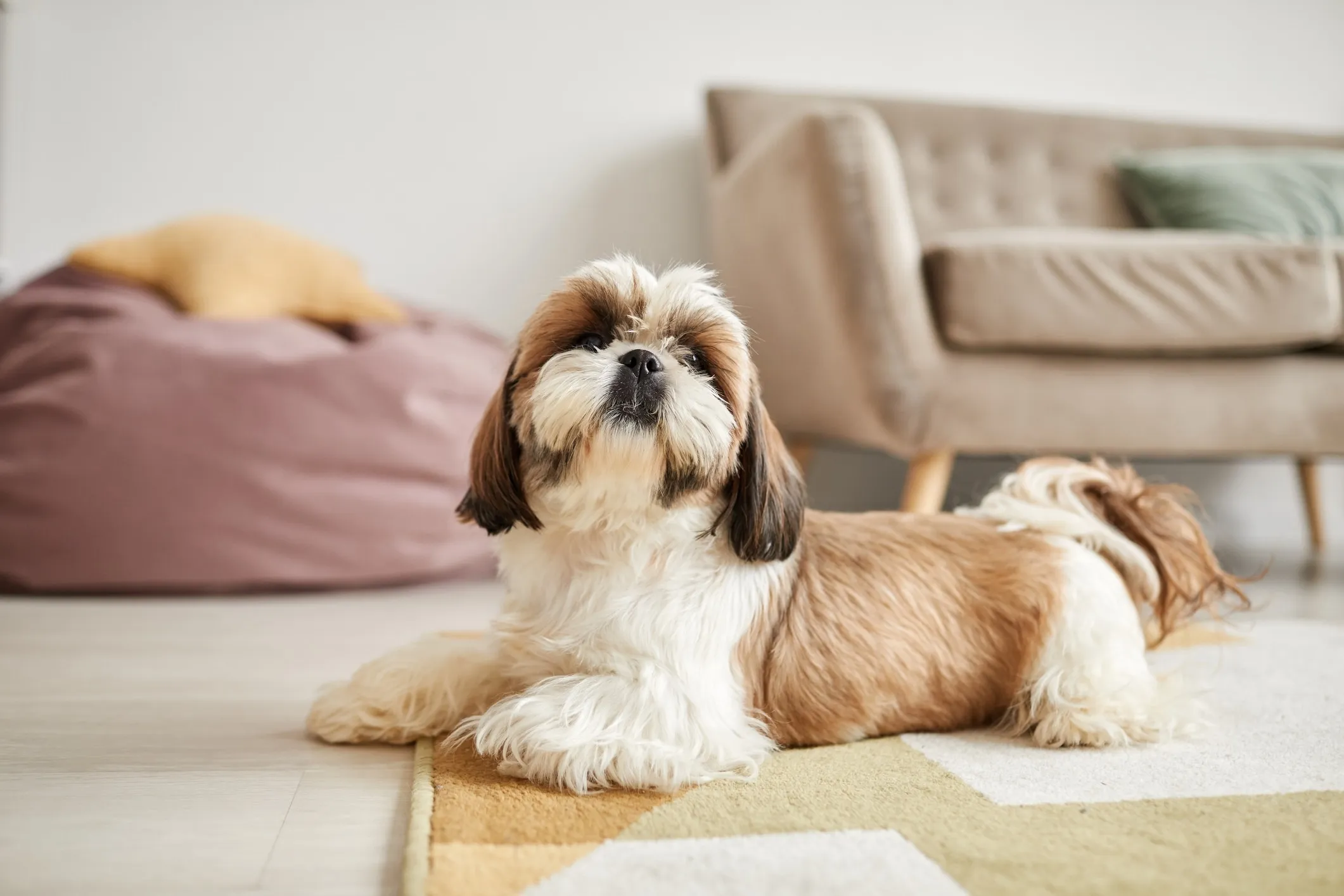 A charming Shih Tzu with a thick, flowing coat lying calmly on a living room floor.
A charming Shih Tzu with a thick, flowing coat lying calmly on a living room floor.
The Shih Tzu is an ancient companion breed known for its friendly temperament and its thick, non-shedding coat. While their beautiful hair requires consistent grooming to prevent tangles, it means less dander floating around the home. Due to their brachycephalic (flat) facial structure, Shih Tzus can be prone to issues like overheating and breathing difficulties, so owners should be mindful of these predispositions and manage their environment accordingly. Managing tear stains is also a common grooming task for this breed.
4. Miniature Schnauzer
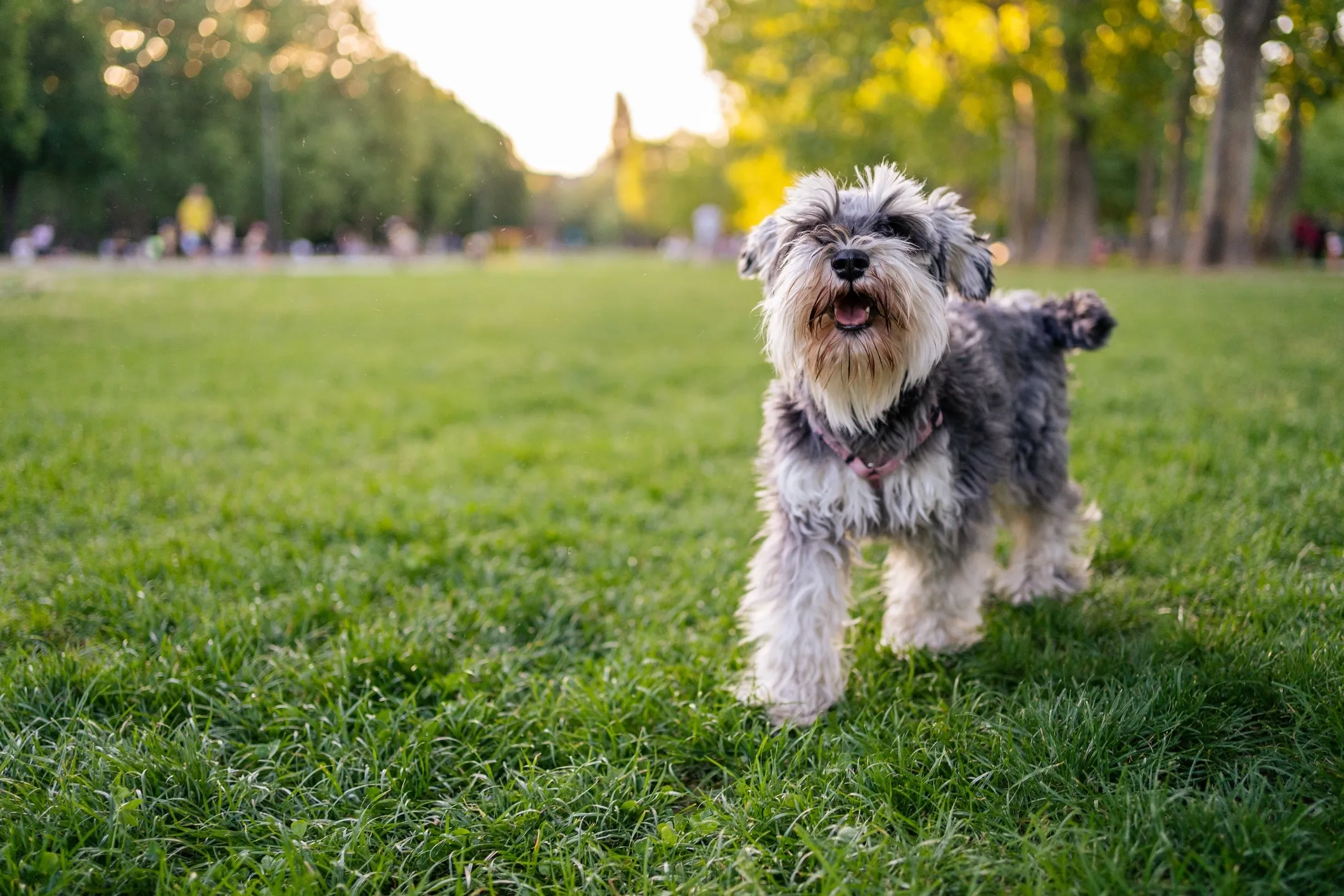 A distinctive salt-and-pepper Miniature Schnauzer wearing a pink harness, posing in a park.
A distinctive salt-and-pepper Miniature Schnauzer wearing a pink harness, posing in a park.
The smallest of the three Schnauzer breeds, the Miniature Schnauzer is a smart and robust dog that fits well into many households. Their wiry double coat sheds minimally, making them a good choice for allergy sufferers. They are energetic dogs that benefit from at least an hour of exercise daily. Consistent grooming, including occasional hand-stripping, helps maintain their coat’s texture and low-shedding properties.
5. Bichon Frise
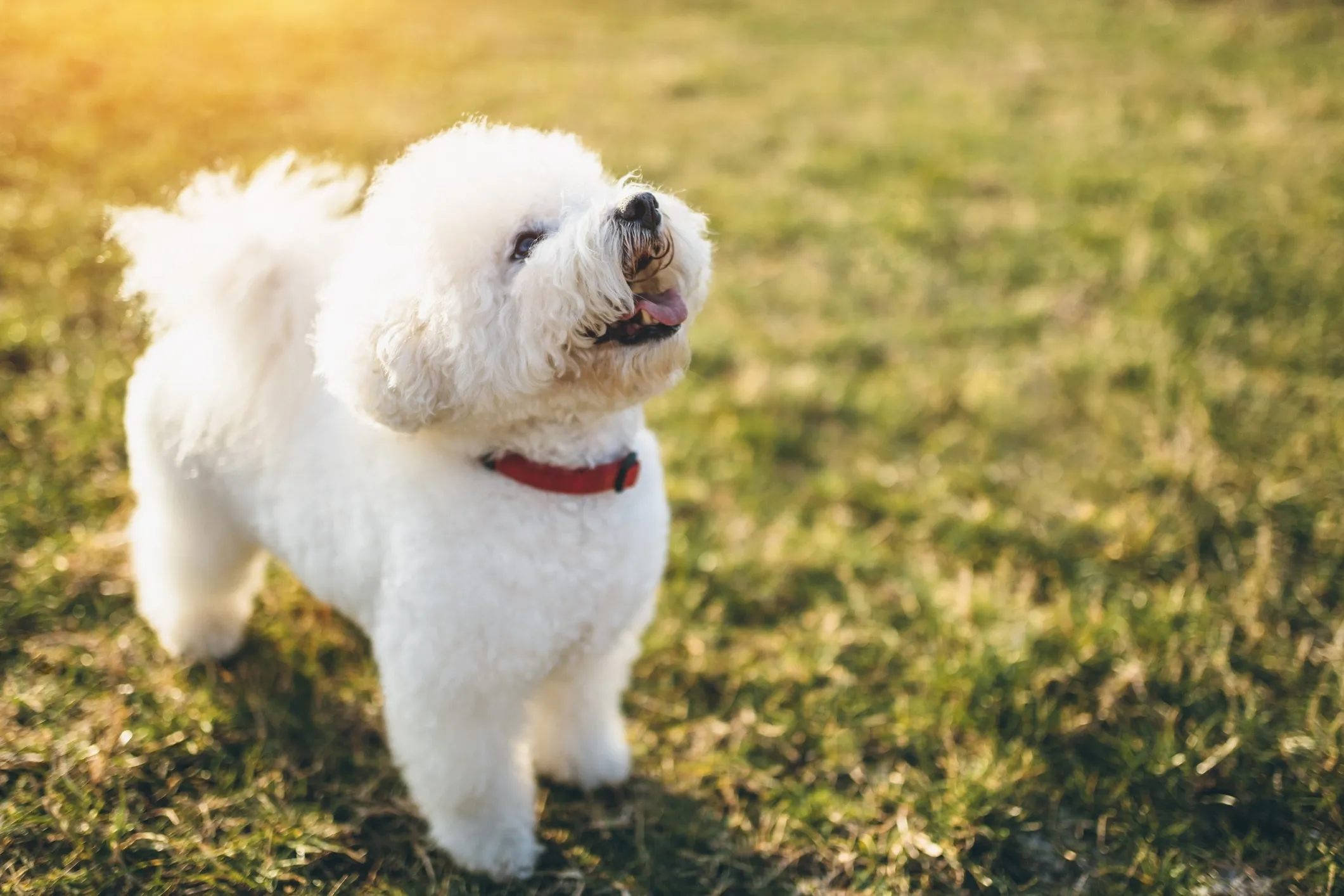 A fluffy white Bichon Frise with a joyful expression, looking up from amidst green grass.
A fluffy white Bichon Frise with a joyful expression, looking up from amidst green grass.
With their small size, playful demeanor, and affectionate nature, Bichon Frises are delightful companions. Their signature curly, fluffy coat is also hypoallergenic and requires regular grooming to prevent matting. Their intelligence makes them highly trainable, and they often excel with positive reinforcement methods.
6. Chinese Crested
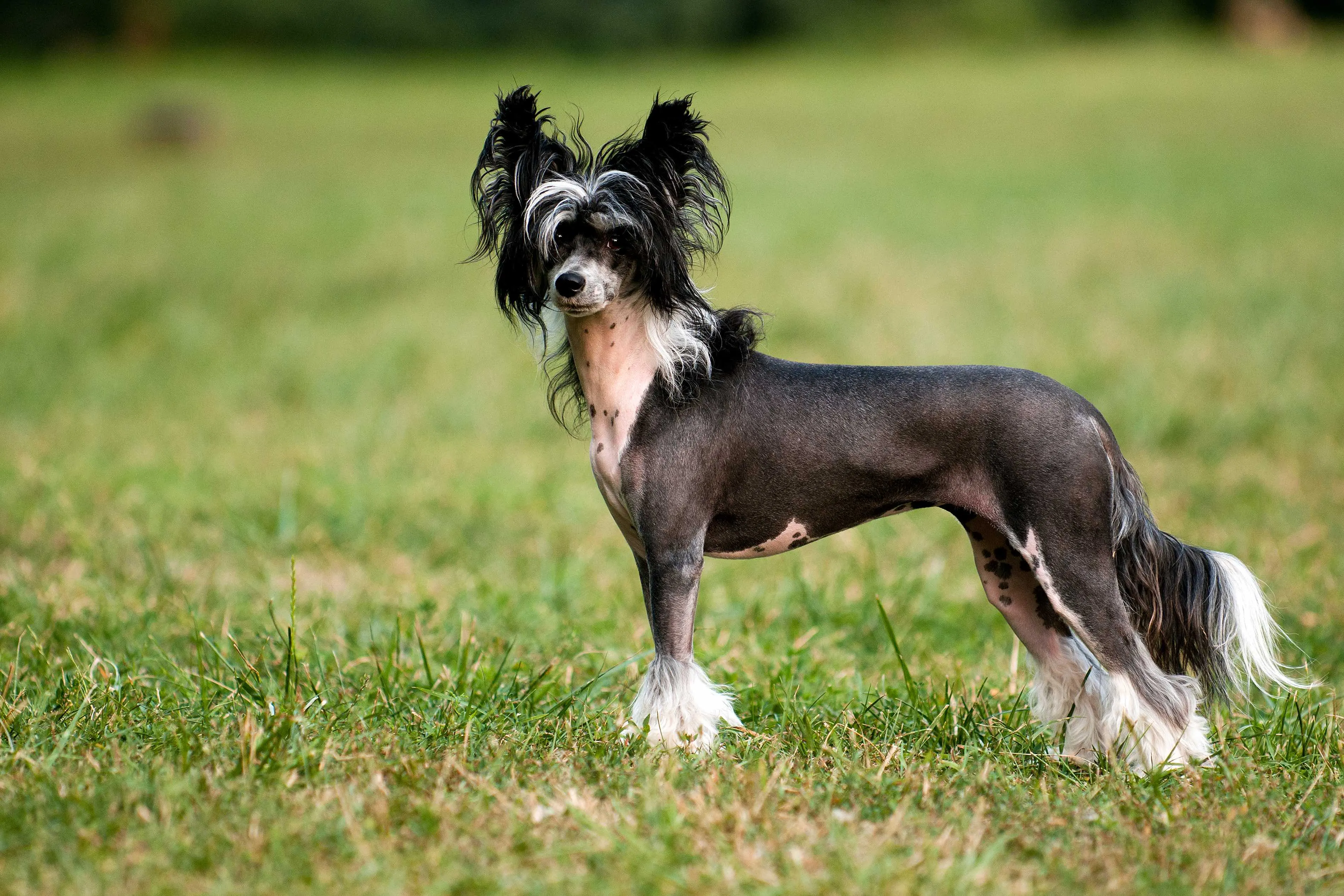 A striking Chinese Crested dog, showcasing its unique appearance with hair tufts on its head, paws, and tail.
A striking Chinese Crested dog, showcasing its unique appearance with hair tufts on its head, paws, and tail.
The Chinese Crested comes in two varieties: hairless and powderpuff. Both are considered hypoallergenic. The hairless variety has smooth skin with patches of hair, while the powderpuff is covered in soft, long hair. Both types are known for being playful, affectionate, and make great companions. Their unique appearance and low-shedding coat make them stand out.
7. Portuguese Water Dog
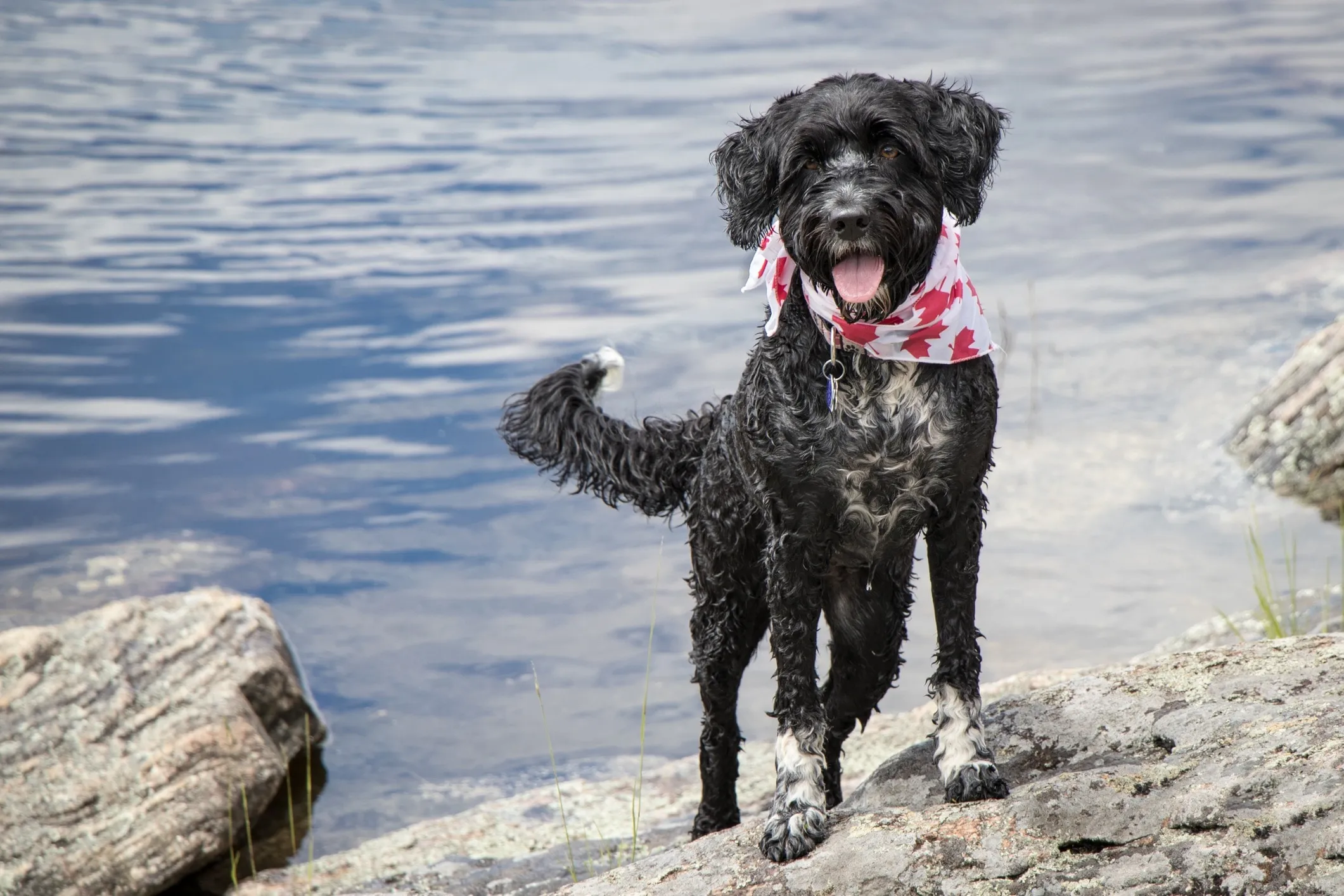 A sleek black and white Portuguese Water Dog with a red bandana, standing near water.
A sleek black and white Portuguese Water Dog with a red bandana, standing near water.
Originally bred to assist fishermen, the Portuguese Water Dog possesses a dense, curly coat that sheds very little. These intelligent and highly trainable dogs are energetic and thrive on activity, especially swimming, given their water-loving heritage. Their low-shedding coat requires regular grooming to maintain.
8. Labradoodle
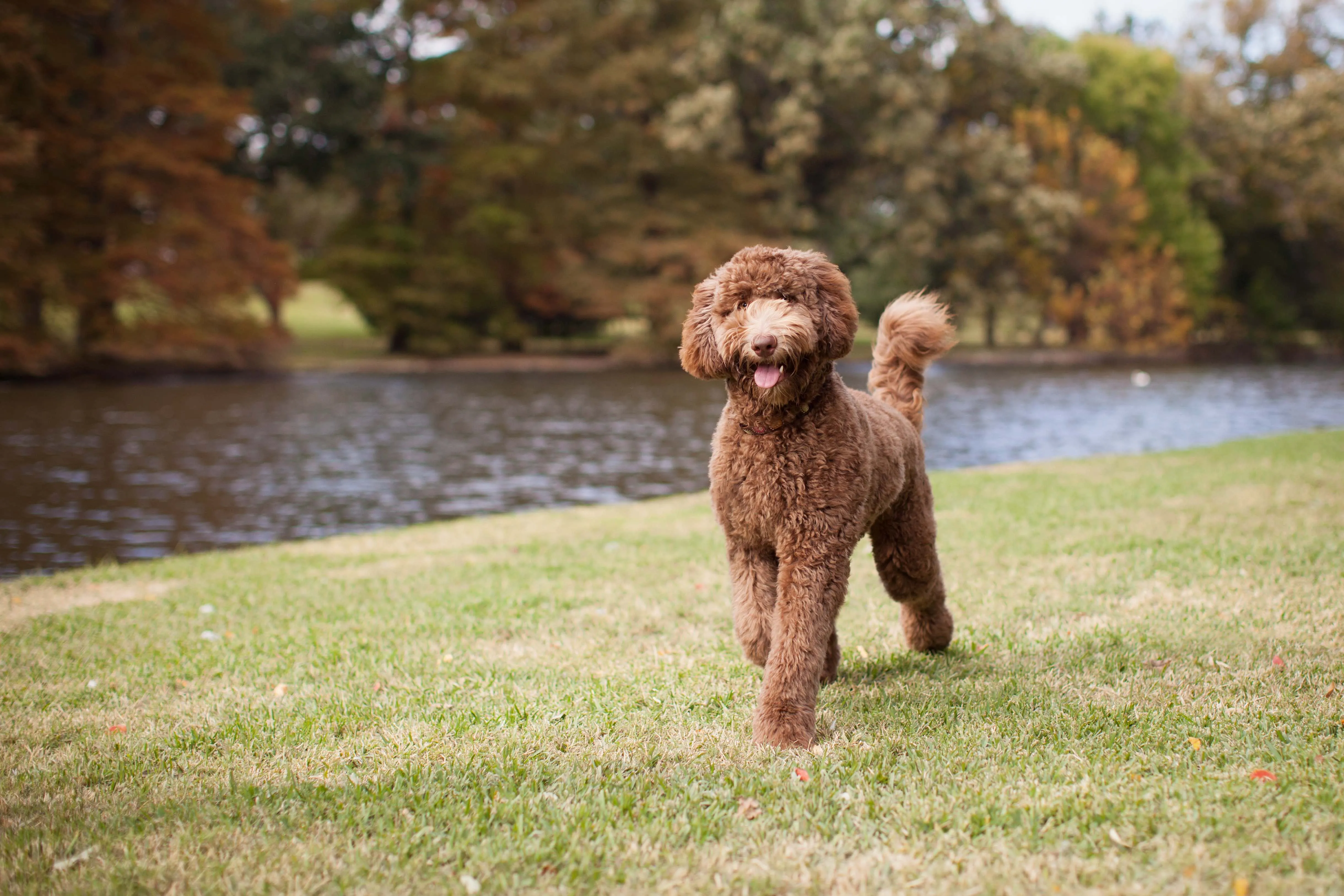 A friendly brown Labradoodle walking through a park setting.
A friendly brown Labradoodle walking through a park setting.
A popular crossbreed, the Labradoodle, resulting from a Labrador Retriever and a Poodle, was originally developed to be a hypoallergenic service dog. They inherit the Poodle’s low-shedding coat and the Labrador’s friendly, intelligent, and eager-to-please nature. Labradoodles are generally excellent family pets, requiring consistent grooming and socialization.
9. Goldendoodle
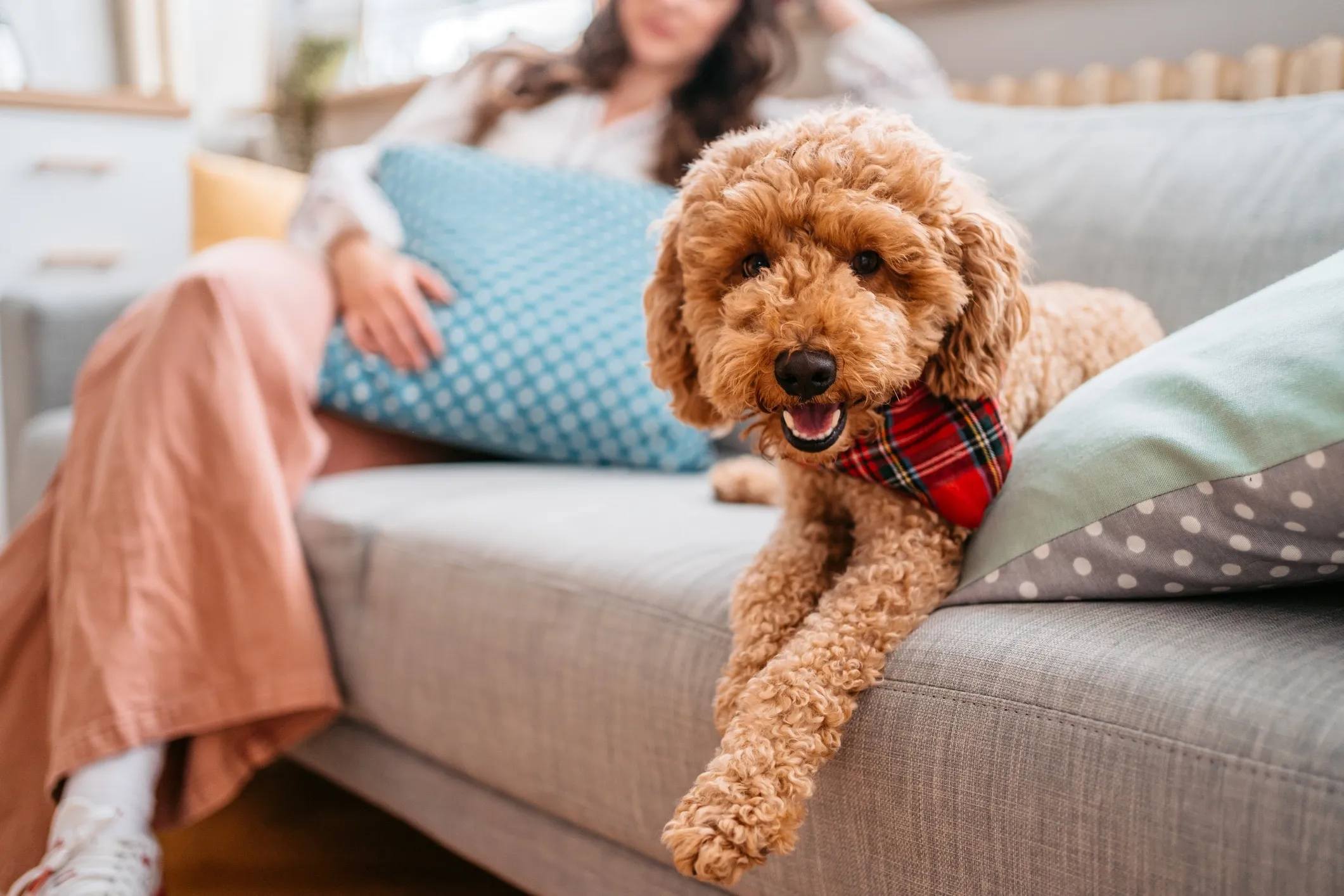 A Goldendoodle resting comfortably on a couch, with a person in the background.
A Goldendoodle resting comfortably on a couch, with a person in the background.
Similar to Labradoodles, Goldendoodles are a cross between a Golden Retriever and a Poodle. They are known for their friendly disposition, high intelligence, and minimal shedding, making them a popular choice for families. Their coat type can vary, but generally, they require regular grooming to prevent matting.
10. Lagotto Romagnolo
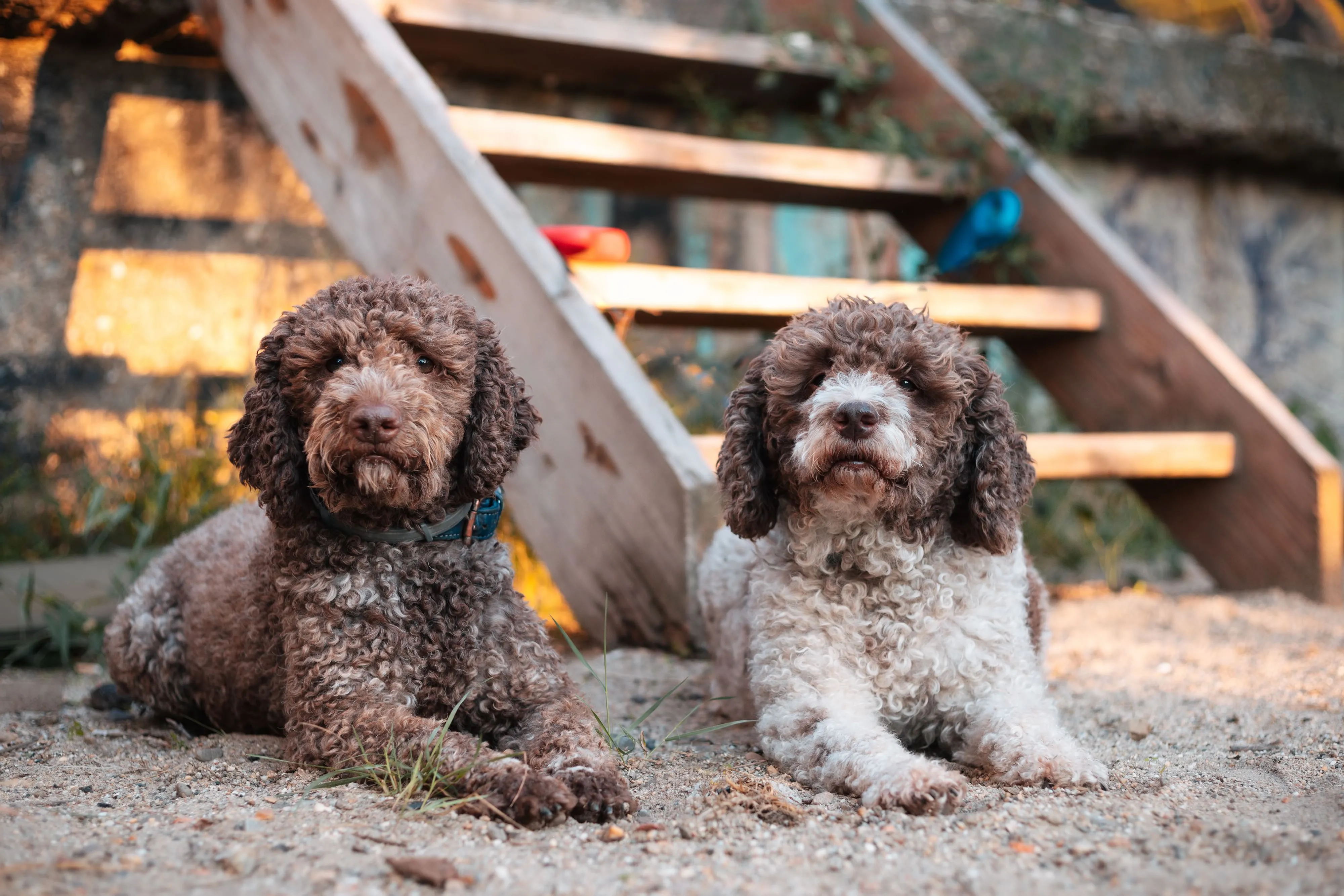 Two Lagotto Romagnolo dogs resting on dirt, looking directly at the camera.
Two Lagotto Romagnolo dogs resting on dirt, looking directly at the camera.
This ancient Italian breed was originally bred as a water retriever, and their curly, woolly coat provided insulation in cold waters. While less common than some other breeds on this list, Lagotto Romagnoli are known for being good with children and other pets, making them suitable family dogs. Their unique coat requires regular brushing.
11. Affenpinscher
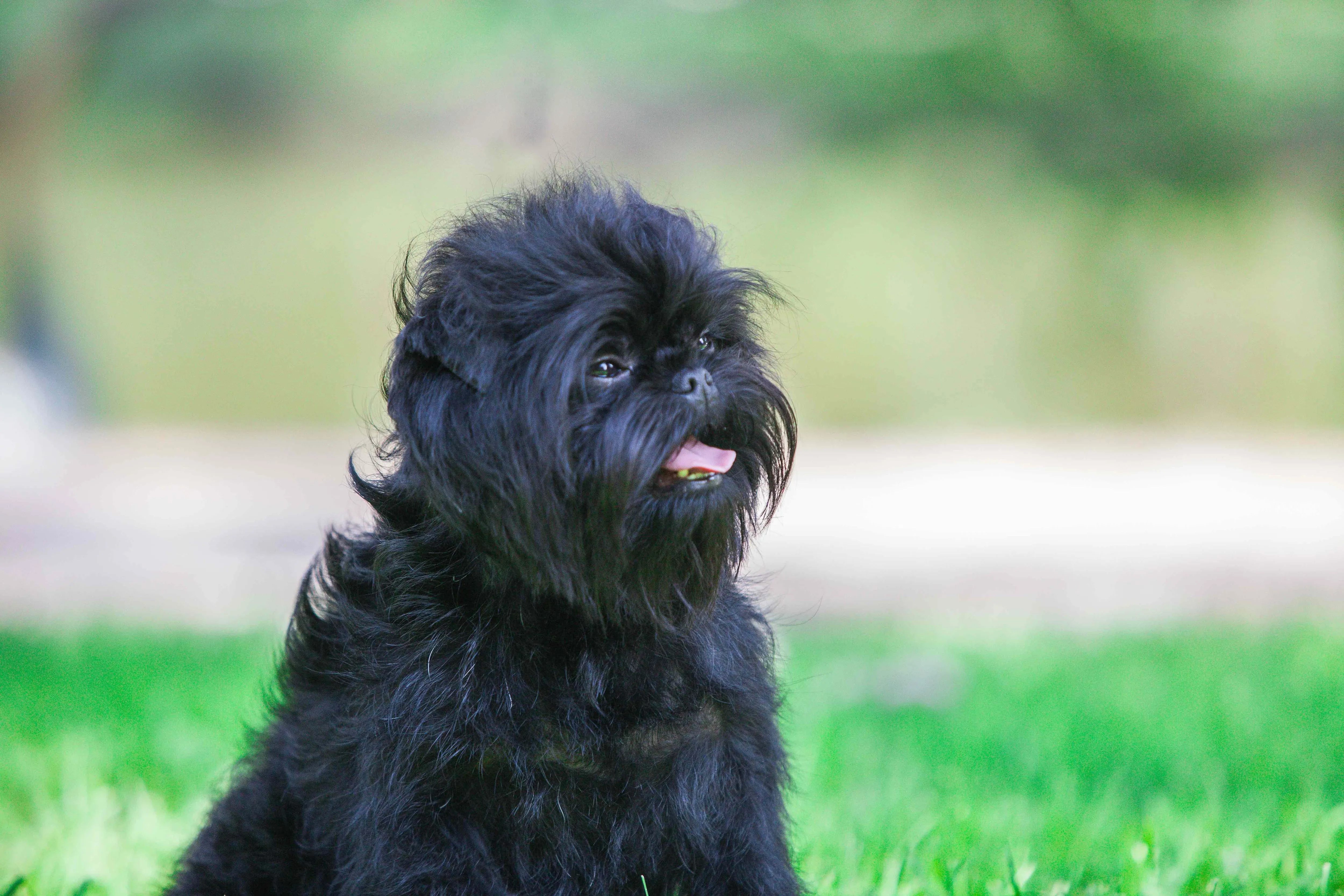 A close-up portrait of a black Affenpinscher, showcasing its distinctive "monkey-like" face.
A close-up portrait of a black Affenpinscher, showcasing its distinctive "monkey-like" face.
These small dogs, with their charming monkey-like appearance, possess a dense, wiry coat that sheds minimally. Their coat requires dedicated care, including regular brushing and a grooming technique called “stripping,” which involves removing dead hair by the root rather than cutting.
12. Irish Water Spaniel
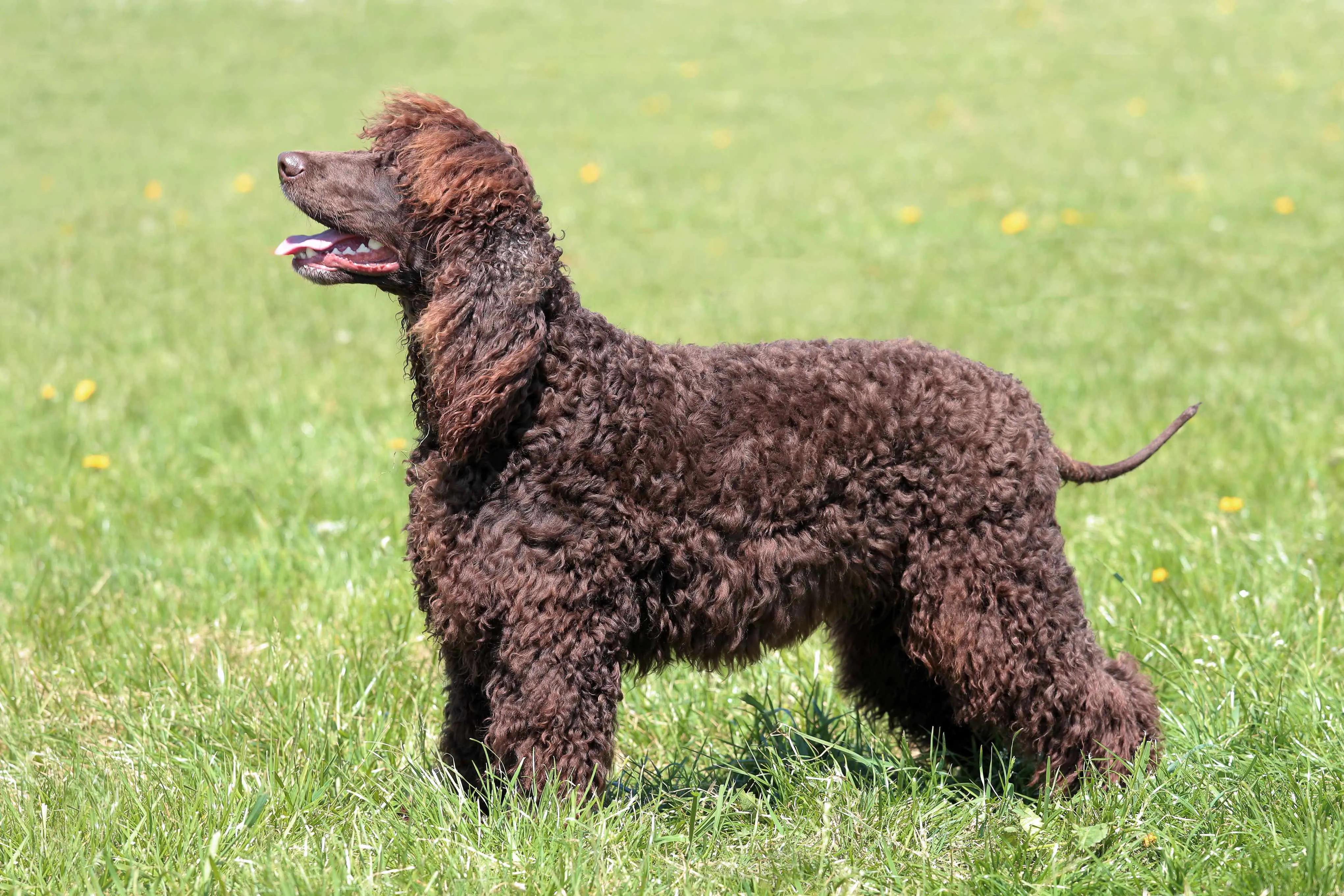 A profile view of a brown Irish Water Spaniel, known for its curly coat.
A profile view of a brown Irish Water Spaniel, known for its curly coat.
Another water-loving breed, the Irish Water Spaniel, has a thick, curly, liver-colored coat that sheds very little. They are friendly, intelligent, and highly trainable. Like many active breeds, they need ample exercise to stay happy and healthy.
13. Bolognese
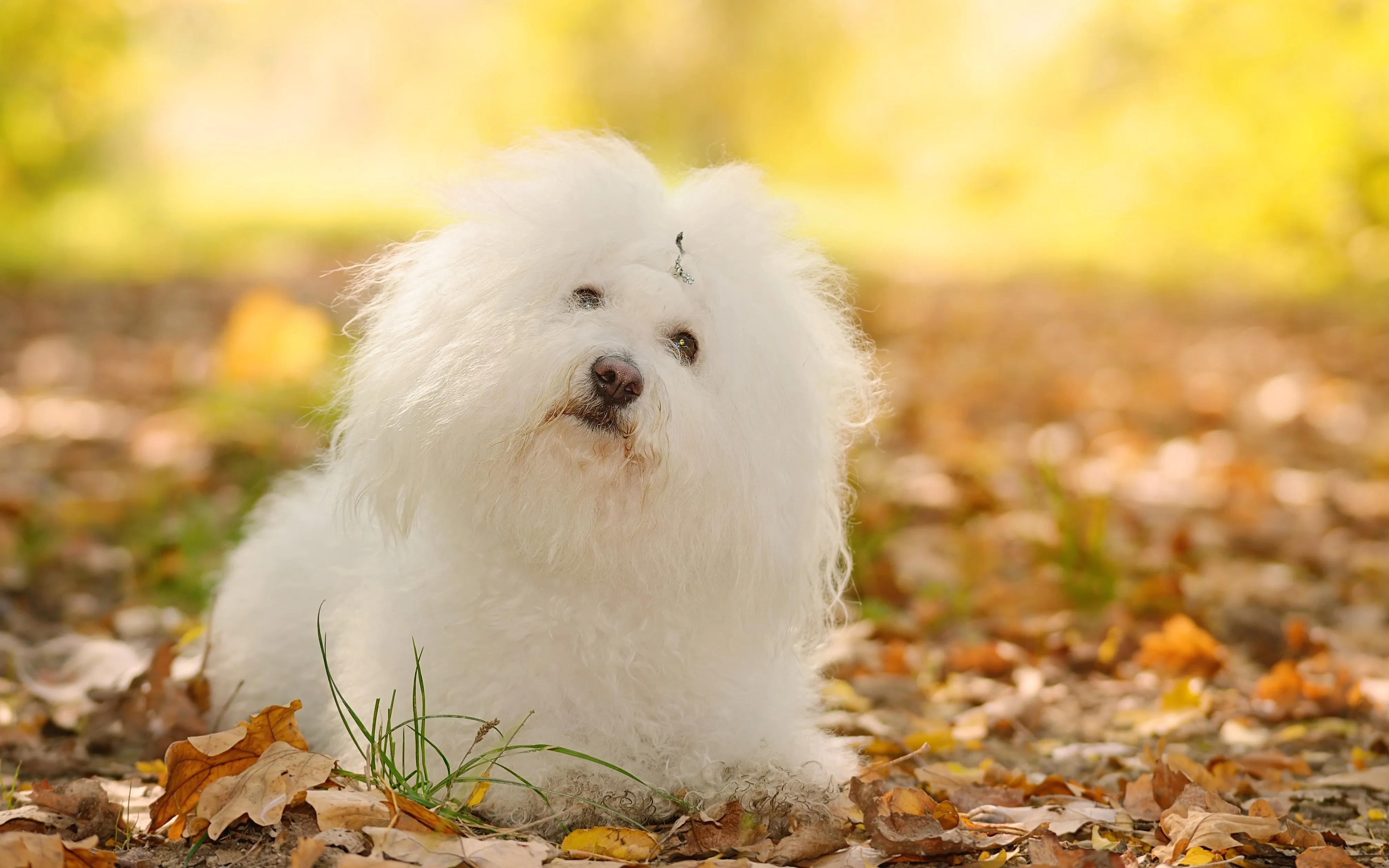 A fluffy white Bolognese dog sitting serenely in an autumn forest.
A fluffy white Bolognese dog sitting serenely in an autumn forest.
Originating from Italy, Bolognese dogs are characterized by their long, fluffy white coat that sheds minimally. Despite their sometimes “messy” appearance, this coat requires regular grooming. They are playful and easygoing, known for getting along well with children and other pets, and adapt to various living situations.
14. Maltese
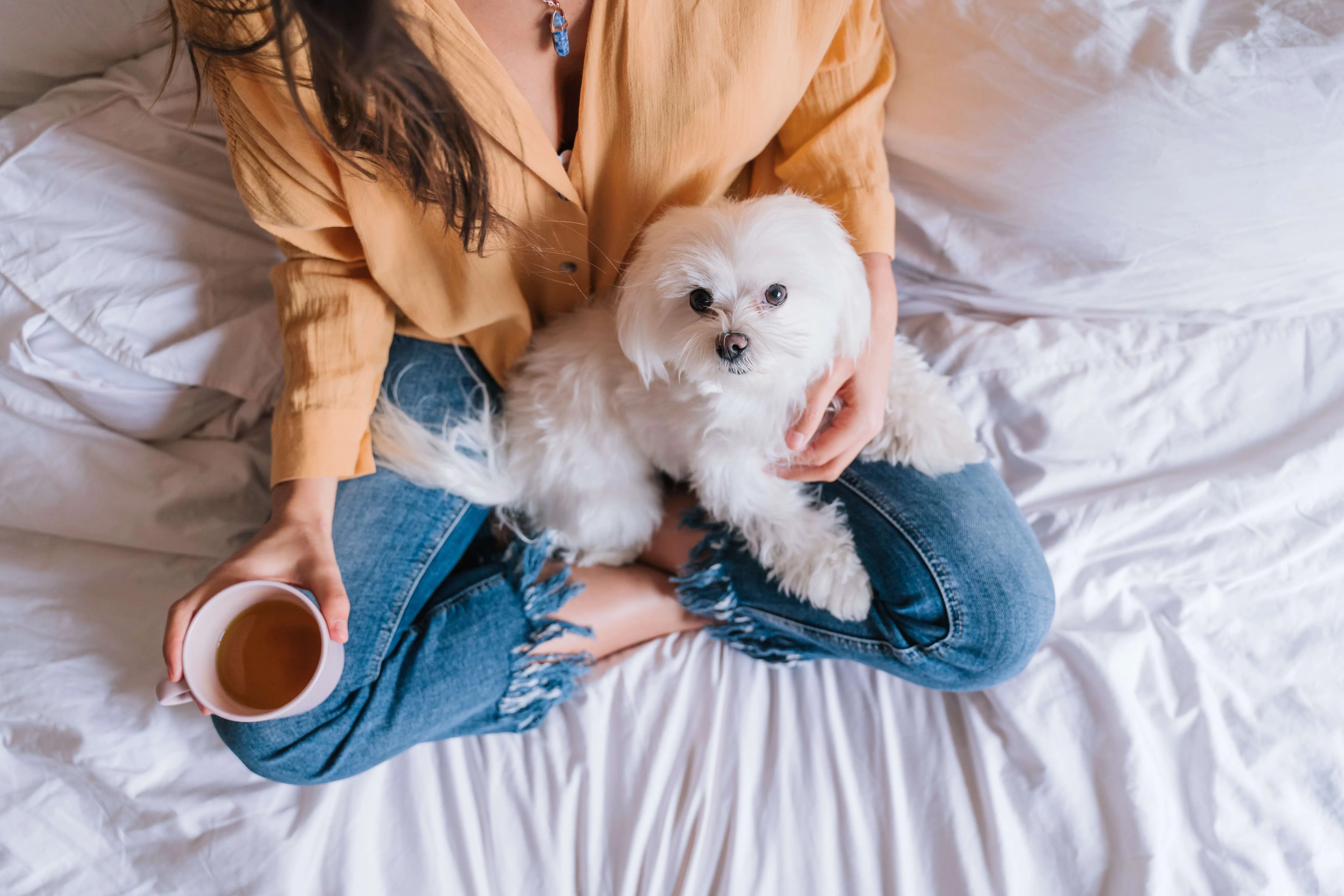 A woman gently holding a small white Maltese dog on a bed.
A woman gently holding a small white Maltese dog on a bed.
The Maltese is a small, elegant dog known for its luxurious, floor-length white coat. This coat sheds very little, making them a popular choice for allergy sufferers. Maltese are affectionate and playful companions, but their coat requires significant grooming, especially if kept long. Many owners opt for a shorter “puppy cut” for easier maintenance.
15. Soft Coated Wheaten Terrier
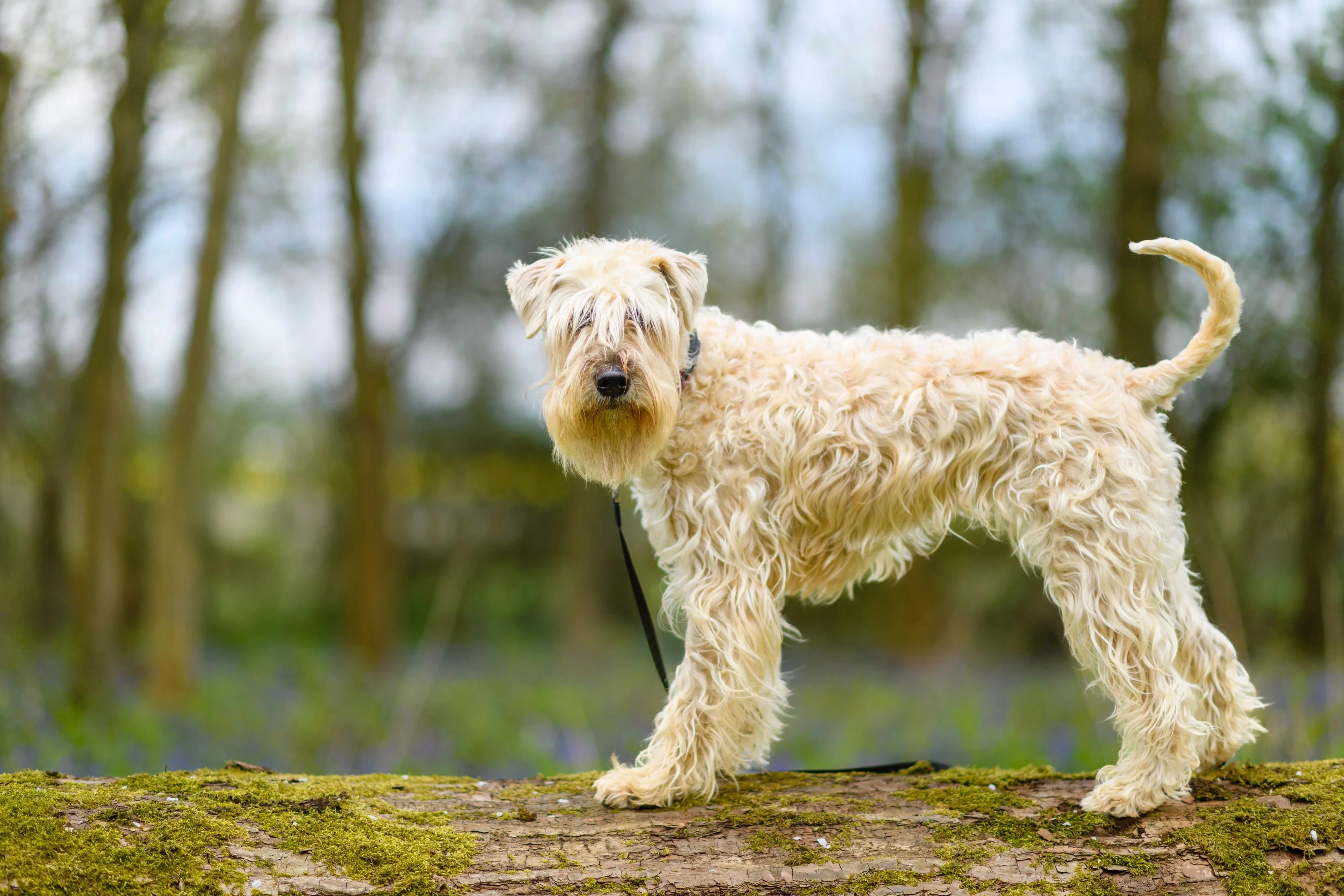 A Soft Coated Wheaten Terrier perched on a log, with a soft, wavy coat.
A Soft Coated Wheaten Terrier perched on a log, with a soft, wavy coat.
This Irish breed boasts a silky, soft coat that is remarkably low-shedding. As terriers, Wheatens are energetic and require ample exercise and mental stimulation to prevent behavioral issues. Their unique coat needs regular grooming to stay tangle-free.
16. Coton de Tulear
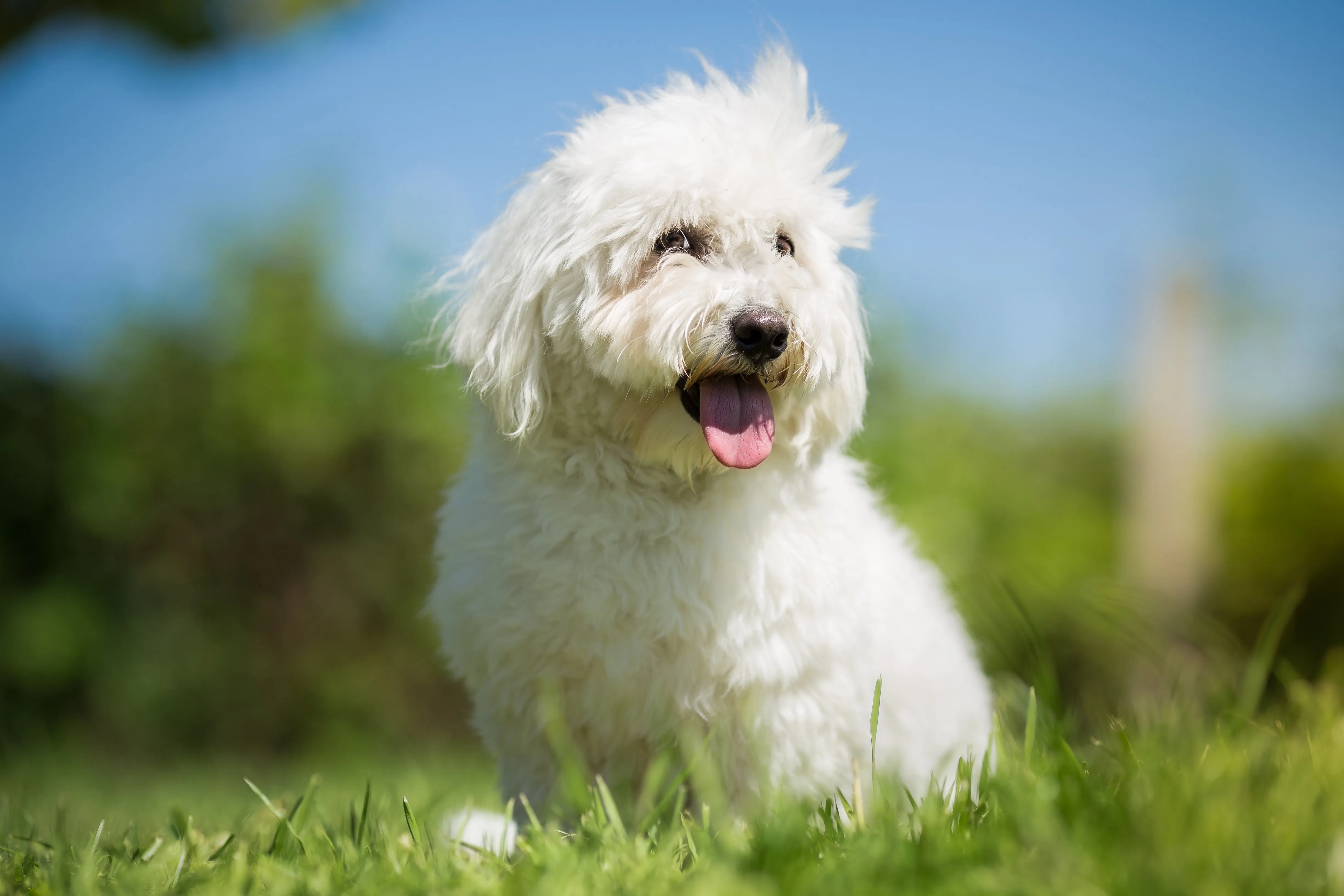 A white Coton de Tulear sitting in grass, its hair blowing in the wind.
A white Coton de Tulear sitting in grass, its hair blowing in the wind.
Hailing from Madagascar, Cotons de Tulear are small, easygoing dogs with a fluffy, cotton-like coat that sheds minimally. Their amiable nature makes them a good fit for families with children and other pets, especially with proper introductions.
17. Schnoodle
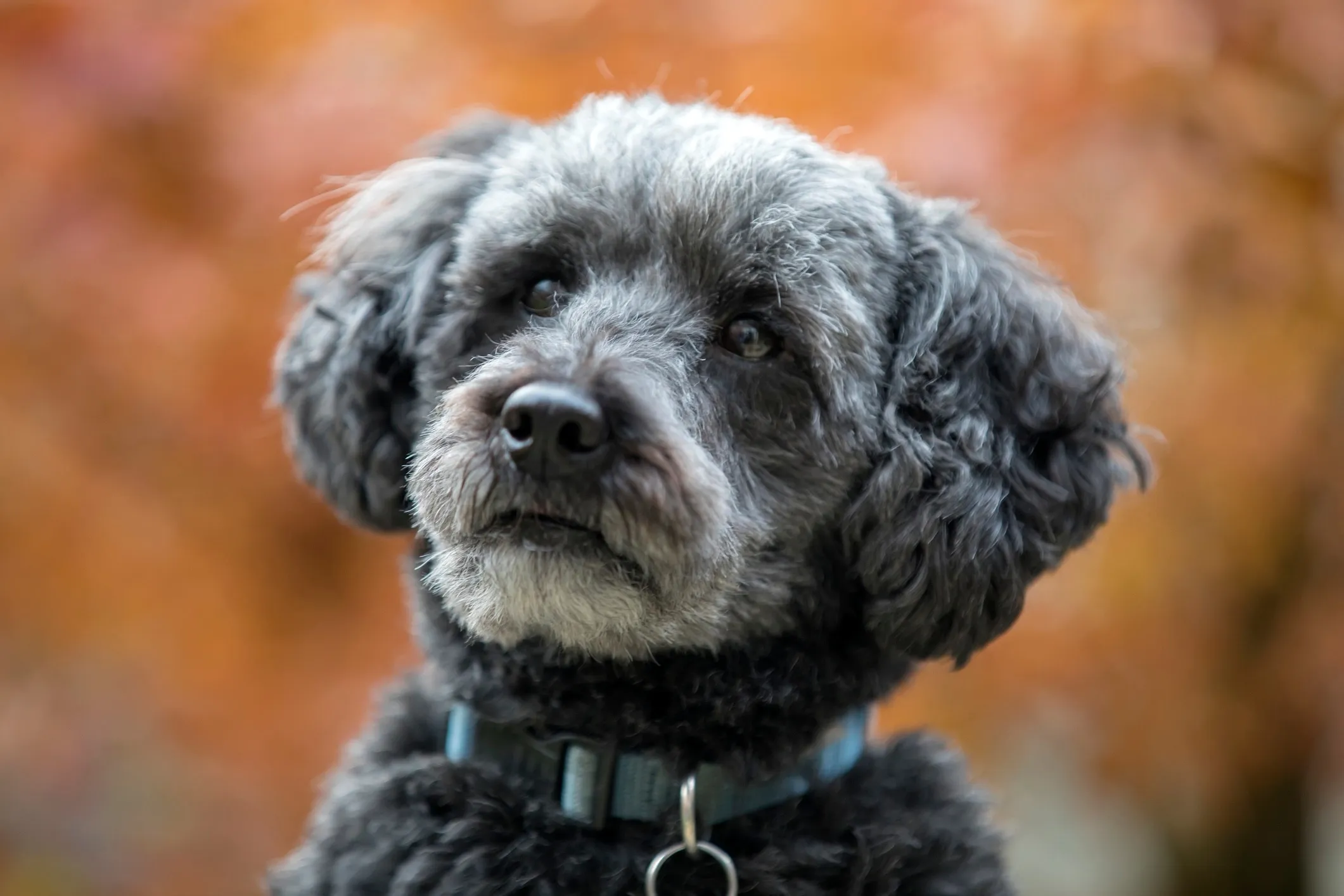 A close-up of a gray Schnoodle, displaying its characteristic curly or wavy coat.
A close-up of a gray Schnoodle, displaying its characteristic curly or wavy coat.
A delightful mix of a Schnauzer and a Poodle, the Schnoodle combines the low-shedding qualities of both parent breeds. Their coat can vary in texture but is consistently low-shedding. They inherit intelligence and affection, making them wonderful family companions.
18. Bedlington Terrier
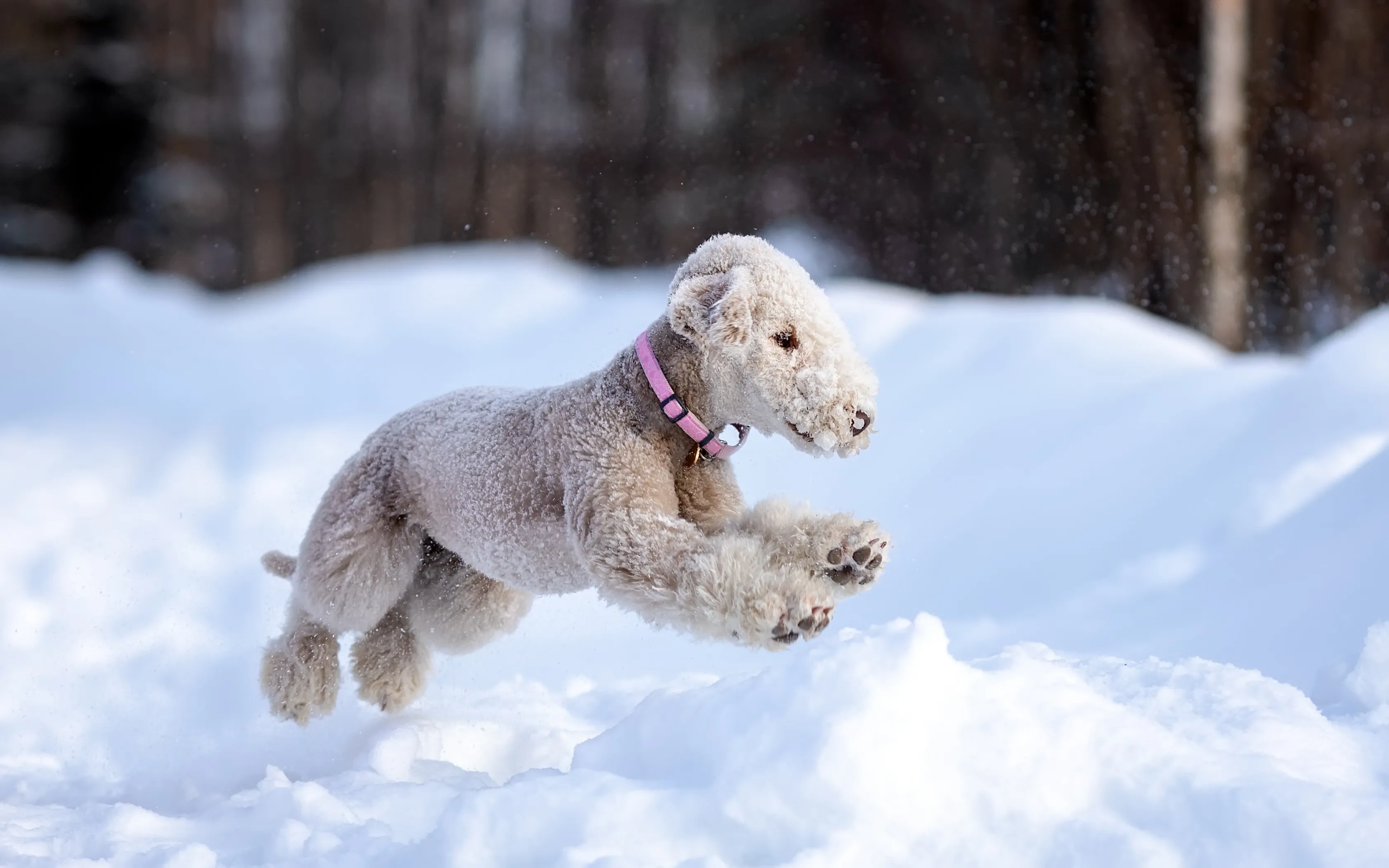 A white Bedlington Terrier running through snow, resembling a lamb.
A white Bedlington Terrier running through snow, resembling a lamb.
Often described as “a lamb in dog’s clothing,” the Bedlington Terrier has a distinctive curly coat that sheds very little. They are devoted to their families and can develop separation anxiety if left alone for extended periods. Their unique “topknot” hairstyle requires regular grooming.
19. Xoloitzcuintli (Mexican Hairless Dog)
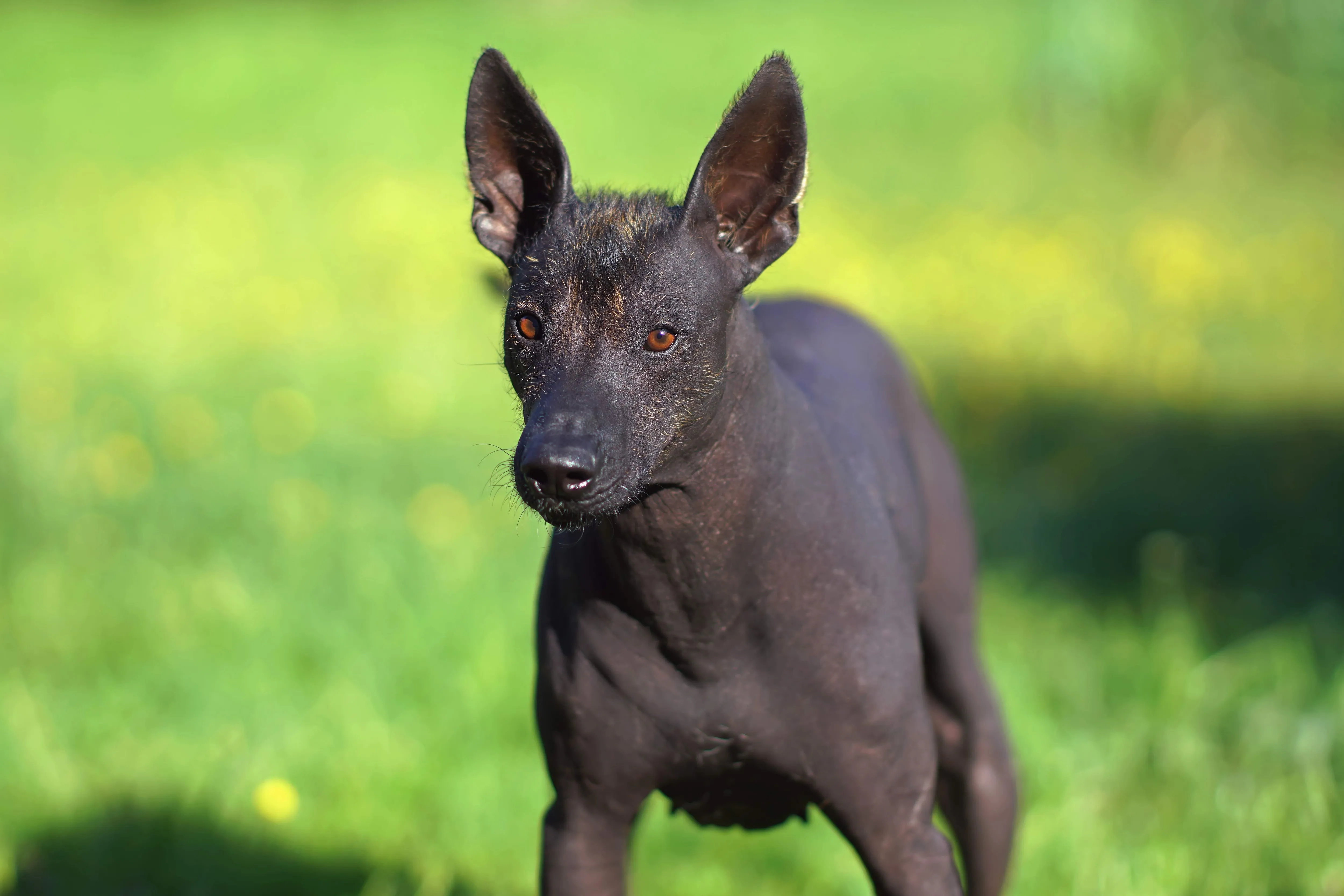 A black Mexican Hairless Dog, also known as Xoloitzcuintli, standing in grass.
A black Mexican Hairless Dog, also known as Xoloitzcuintli, standing in grass.
One of the oldest dog breeds, the Xoloitzcuintli comes in hairless and coated varieties, both of which are considered hypoallergenic. They come in toy, miniature, and standard sizes and are known for their ancient lineage and gentle nature.
20. Whoodle
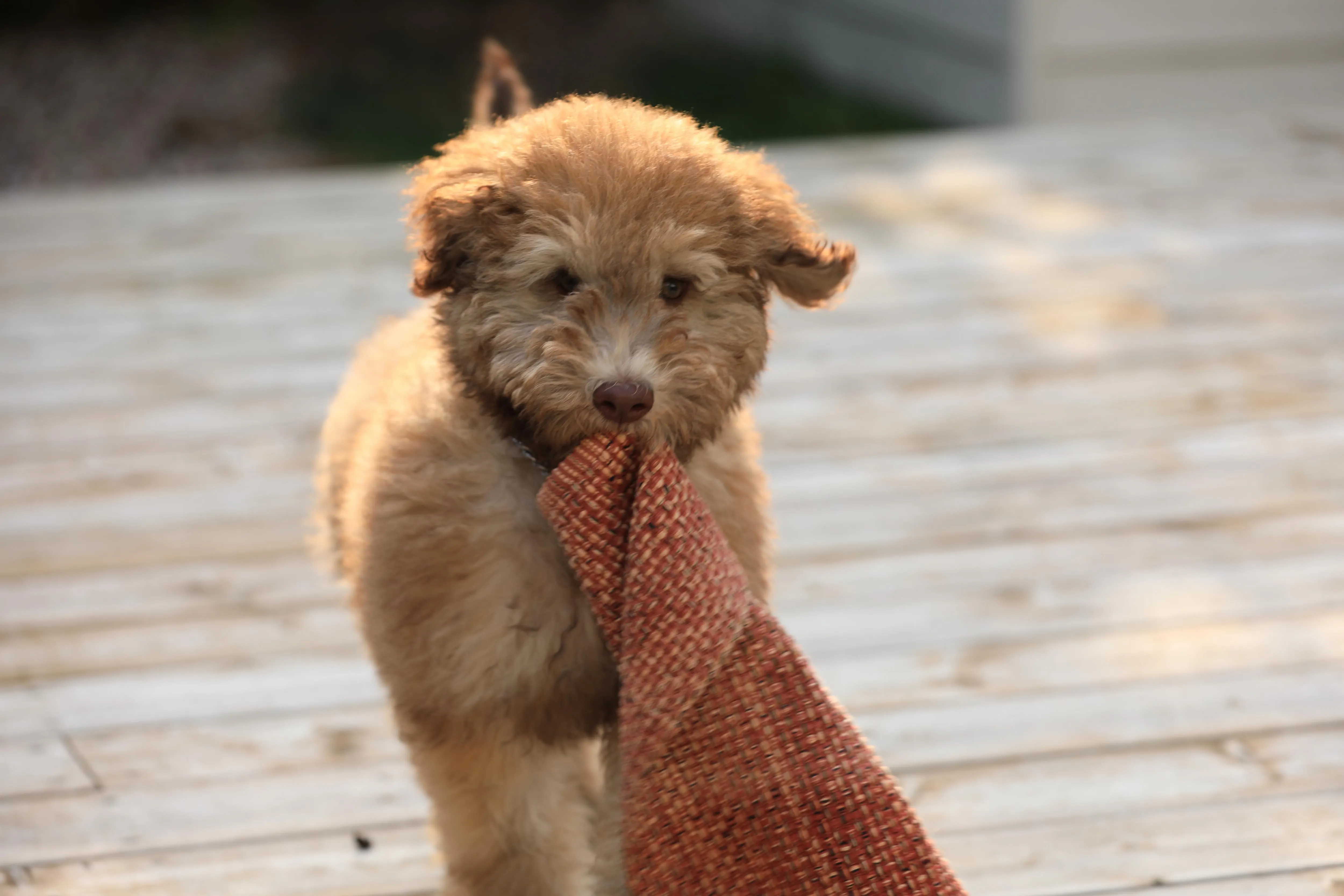 A tan Whoodle puppy playfully dragging a washcloth.
A tan Whoodle puppy playfully dragging a washcloth.
A cross between a Soft Coated Wheaten Terrier and a Poodle, the Whoodle is a friendly and affectionate dog with a very low-shedding coat. They inherit intelligence and a love for their families, making them excellent companions.
21. Bernedoodle
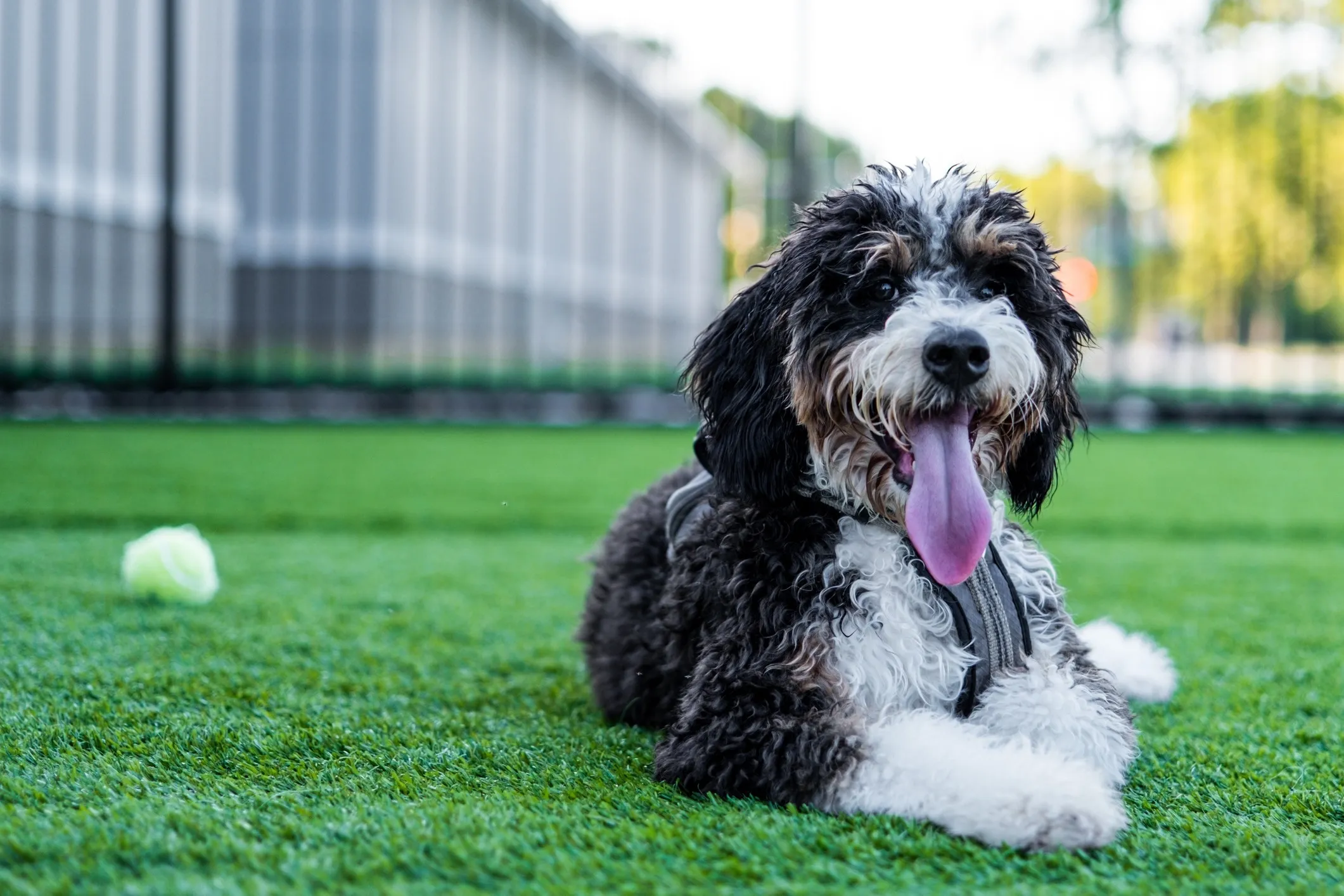 A large Bernedoodle resting in grass with its tongue out.
A large Bernedoodle resting in grass with its tongue out.
This crossbreed between a Bernese Mountain Dog and a Poodle is known for its friendly, affectionate, and gentle nature, making them great family dogs. Their large size is balanced by a low-shedding coat that requires regular grooming. They need plenty of exercise to stay happy.
22. Shorkie
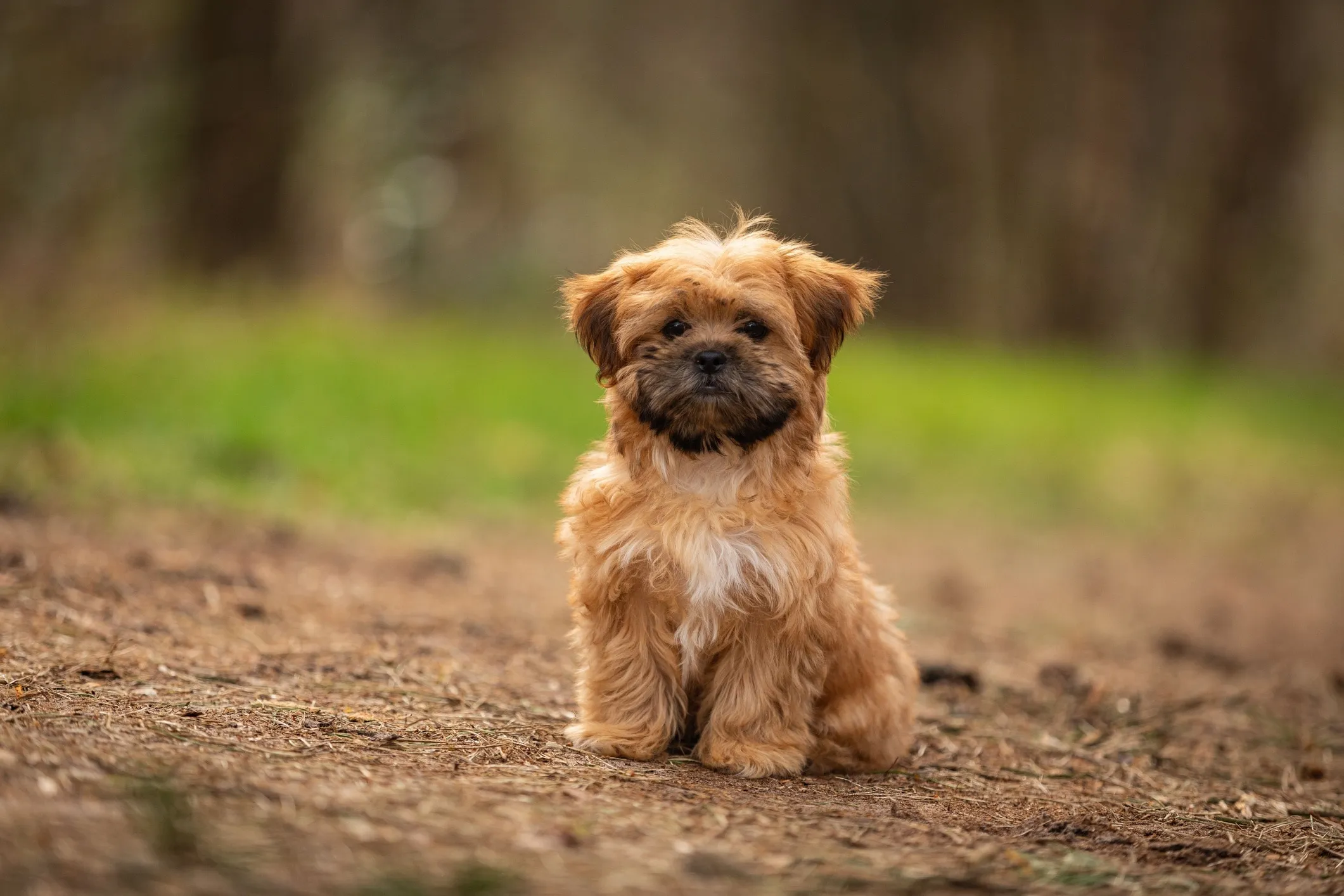 A tan and black Shorkie, a mix of Shih Tzu and Yorkshire Terrier, sitting on a hiking trail.
A tan and black Shorkie, a mix of Shih Tzu and Yorkshire Terrier, sitting on a hiking trail.
The Shorkie is a charming crossbreed of the Shih Tzu and the Yorkshire Terrier, combining the best traits of both small, hypoallergenic breeds. They are playful and friendly but, like many small breeds, require consistent grooming.
23. Shih-Poo
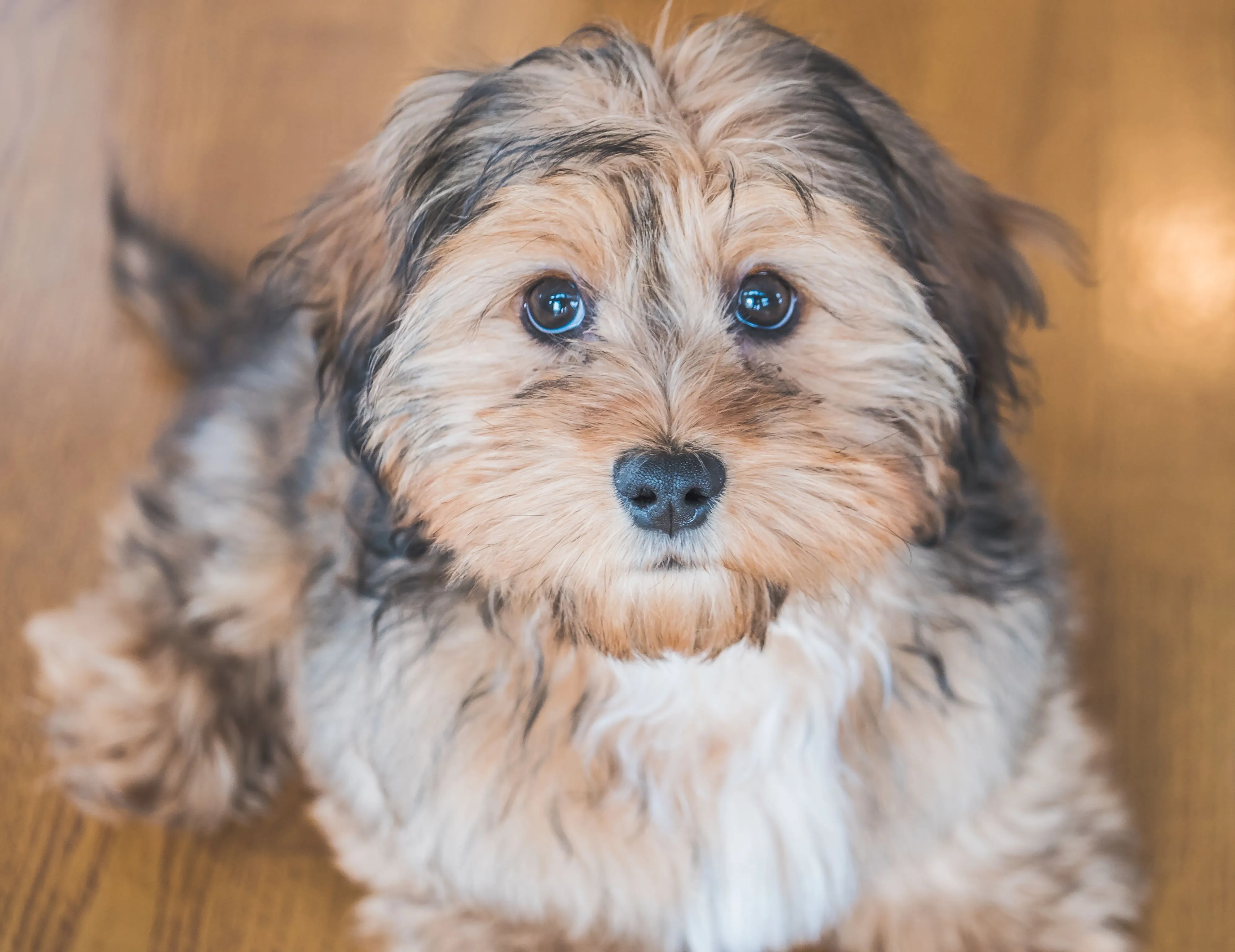 A close-up of a tan and black Shih-Poo, a hybrid of Shih Tzu and Poodle.
A close-up of a tan and black Shih-Poo, a hybrid of Shih Tzu and Poodle.
A delightful mix of a Shih Tzu and a Poodle, the Shih-Poo is a small, adaptable dog that can thrive in various living environments. They need daily exercise and regular brushing to maintain their low-shedding coat.
24. Peruvian Inca Orchid
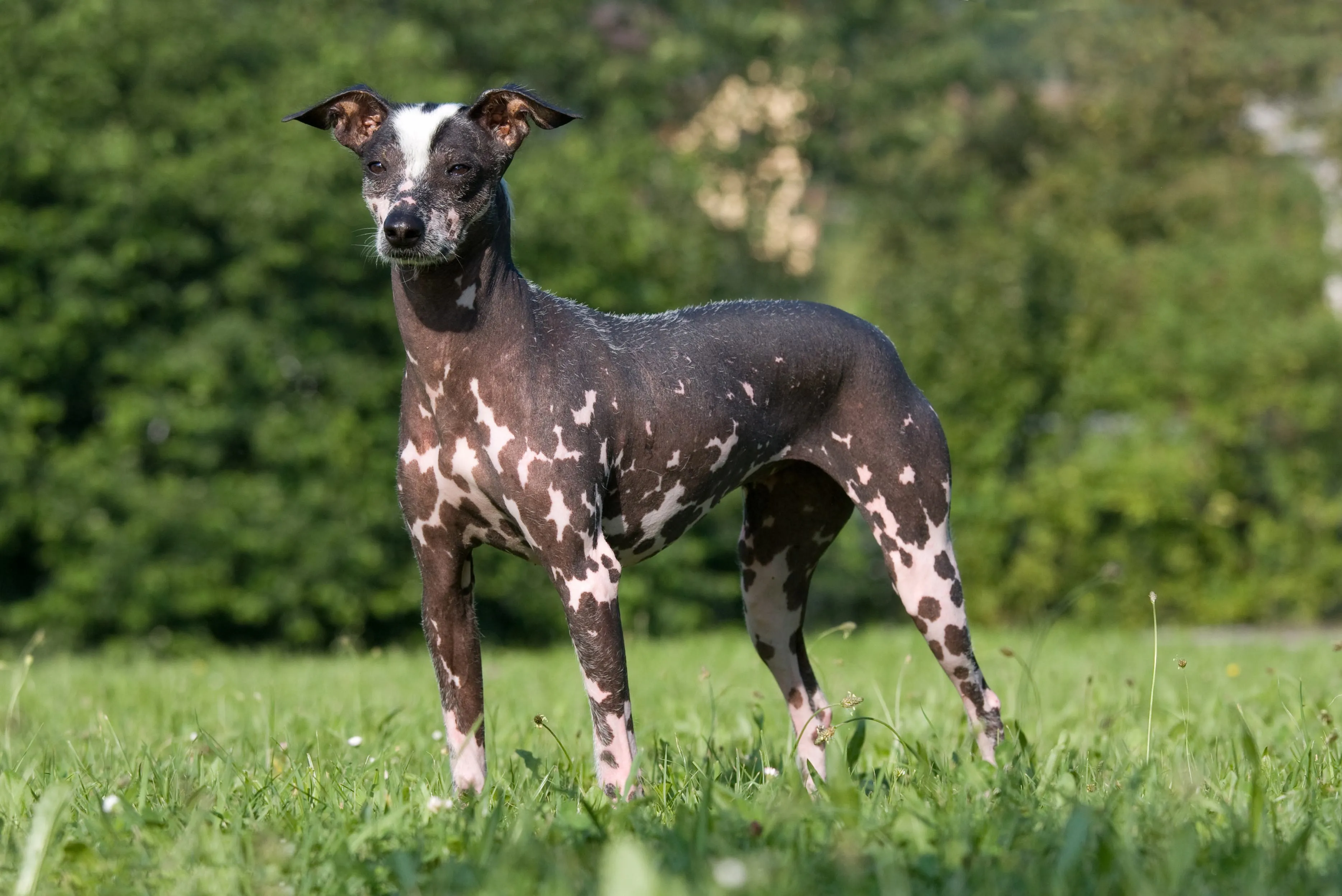 A Peruvian Inca Orchid dog, showcasing its nearly hairless body.
A Peruvian Inca Orchid dog, showcasing its nearly hairless body.
Rare and ancient, the Peruvian Inca Orchid is a nearly hairless breed, making it highly hypoallergenic. Available in three sizes, this breed is a national symbol of Peru and a unique companion for those seeking minimal shedding.
25. Malshi
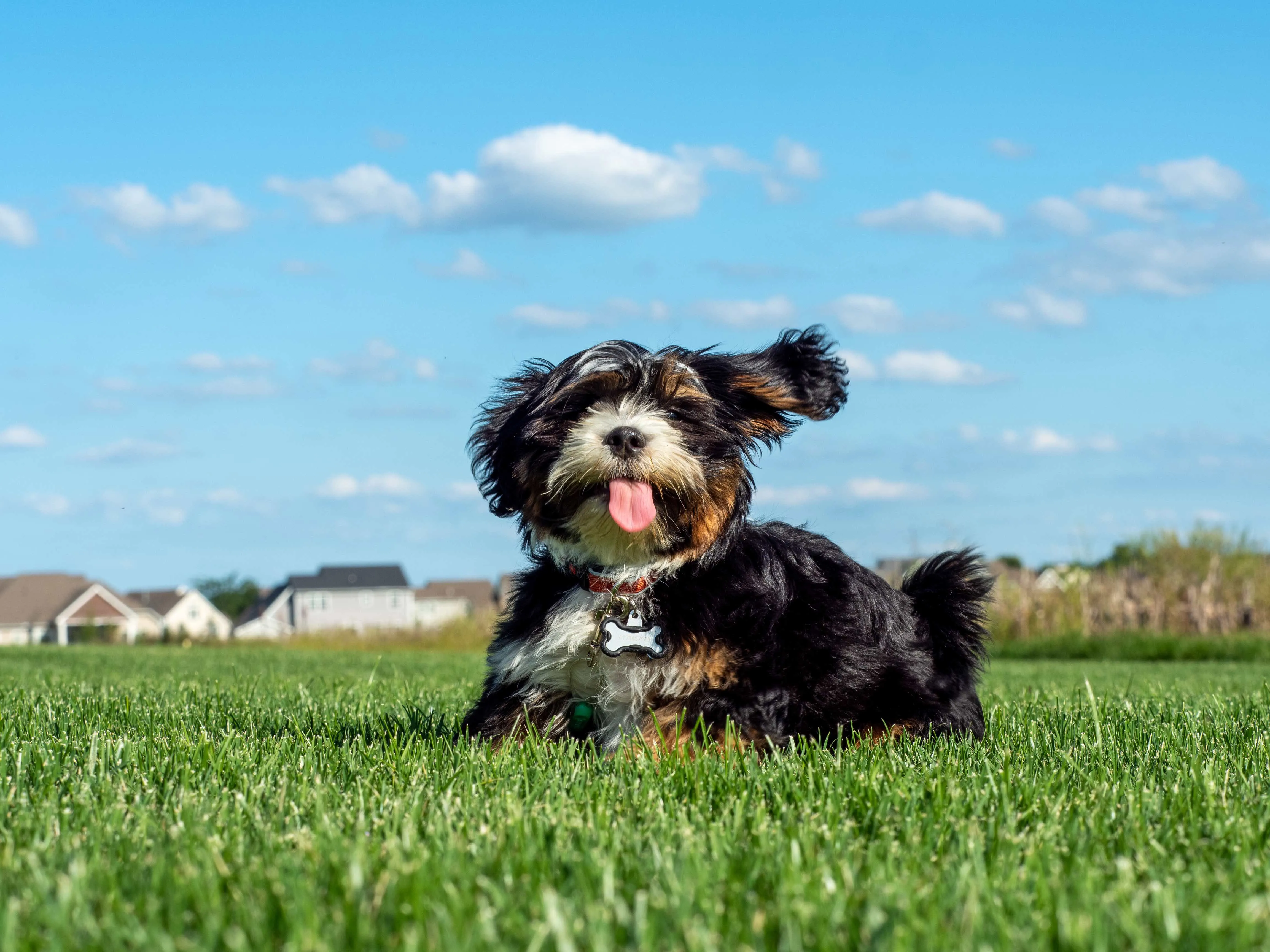 A tri-color Malshi dog sitting in green grass.
A tri-color Malshi dog sitting in green grass.
As a cross between a Maltese and a Shih Tzu, the Malshi is a small, happy dog that thrives on close companionship. Their hypoallergenic coat requires regular grooming, and their affectionate nature makes them devoted pets.
Essential Tips for Living with a Low-Shedding Dog
Bringing home a dog that doesn’t shed much is a fantastic step for allergy sufferers, but it’s essential to adopt a proactive approach to maximize allergen control and ensure your dog’s well-being.
Maintain a Rigorous Grooming Routine
Hypoallergenic breeds, despite shedding less, still require consistent grooming. Their coats are designed to trap dander and hair, which means regular brushing is paramount to prevent tangles and mats. Aim for daily brushing, especially for breeds with longer or curly coats, and plan for professional grooming appointments every 4-6 weeks. Bathing with a specialized dog shampoo can further help reduce dander. Consider products like Allerpet® Dog Dander Remover to help minimize dander on the coat.
Keep Your Home Environment Clean
Reducing allergens extends beyond your dog’s grooming. Regularly vacuuming your home with a HEPA filter, dusting surfaces, and washing your dog’s bedding frequently are crucial steps. Air purifiers can also significantly improve indoor air quality by trapping airborne dander. Ensure good ventilation in your home to help circulate fresh air.
Consult with a Healthcare Professional
Managing allergies is a critical aspect of sharing your life with a dog. Always consult with your doctor or an allergist to understand your specific triggers and develop an effective management plan. This may involve medication, nasal sprays, or immunotherapy. Be mindful of avoiding direct contact with your dog’s saliva or urine, as these can also be sources of allergens.
By understanding the nuances of hypoallergenic breeds and committing to a consistent care routine, individuals with allergies can successfully welcome the companionship and joy that medium to small dog breeds that don’t shed can bring into their lives.
Please note: While this article lists breeds known for low shedding, individual reactions can vary. It’s always recommended to spend time with a specific dog before adoption to assess potential allergic responses.
